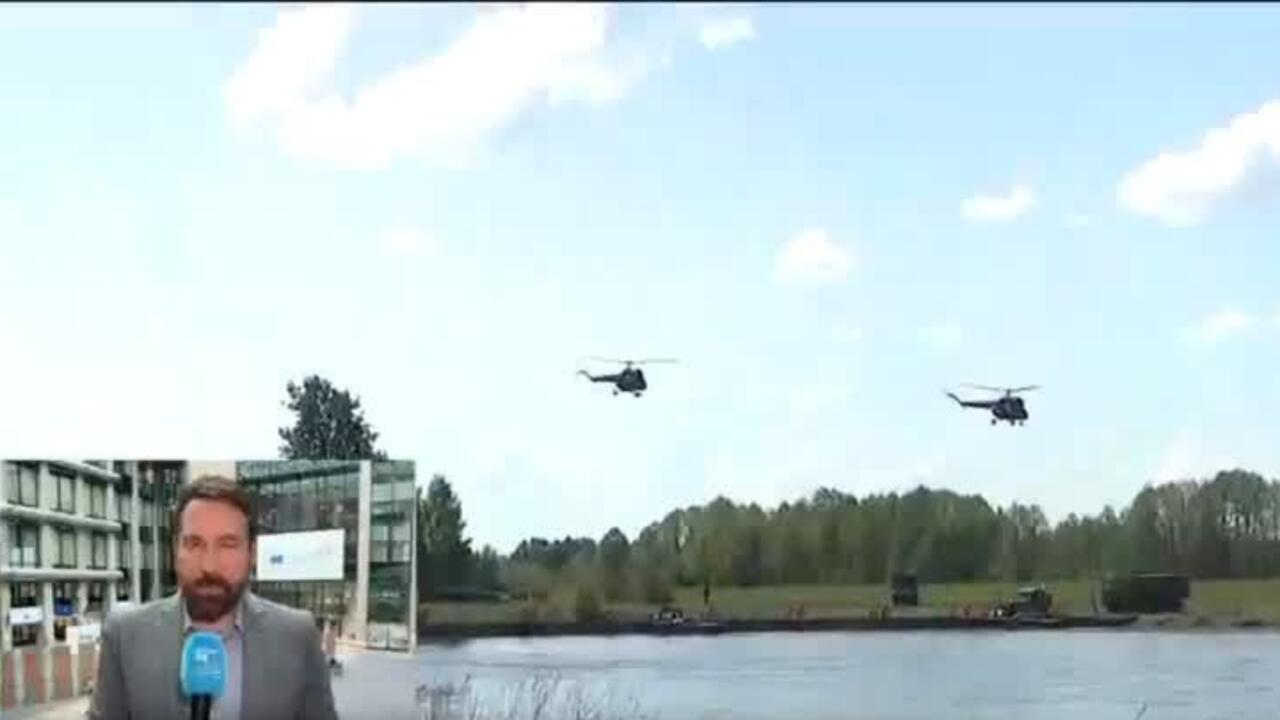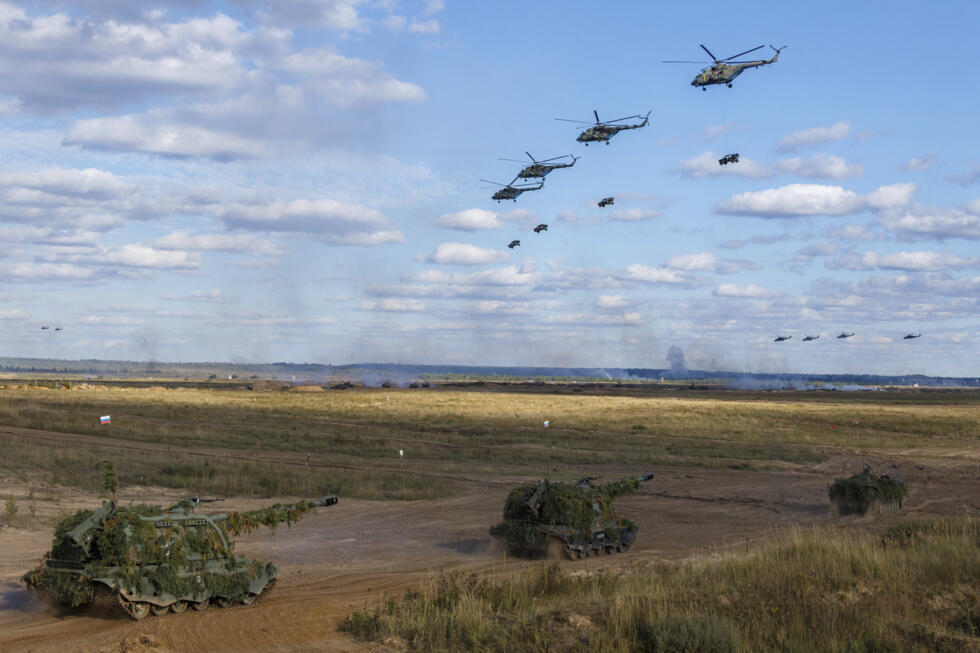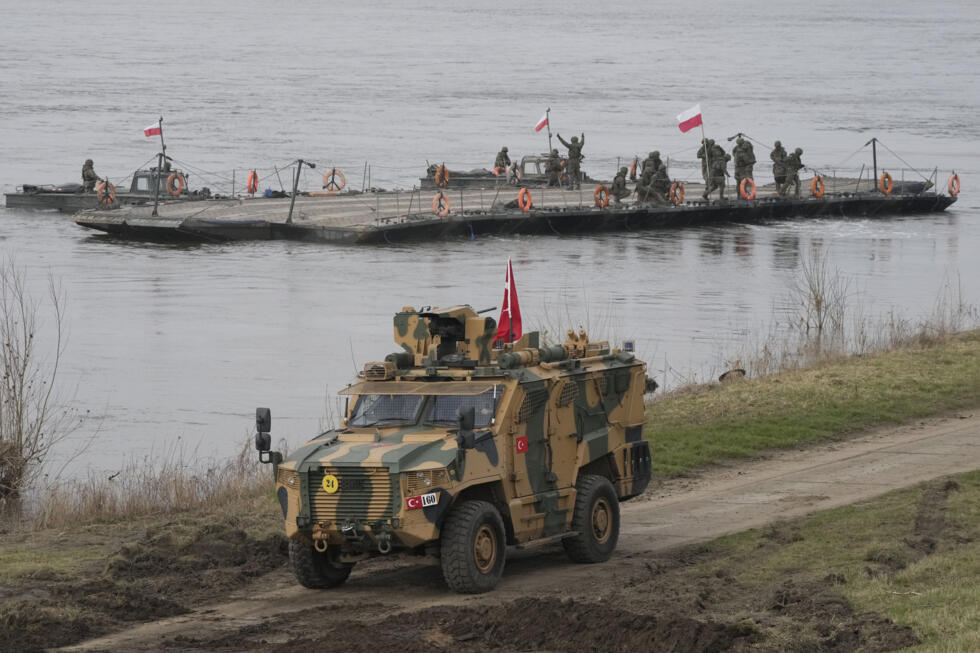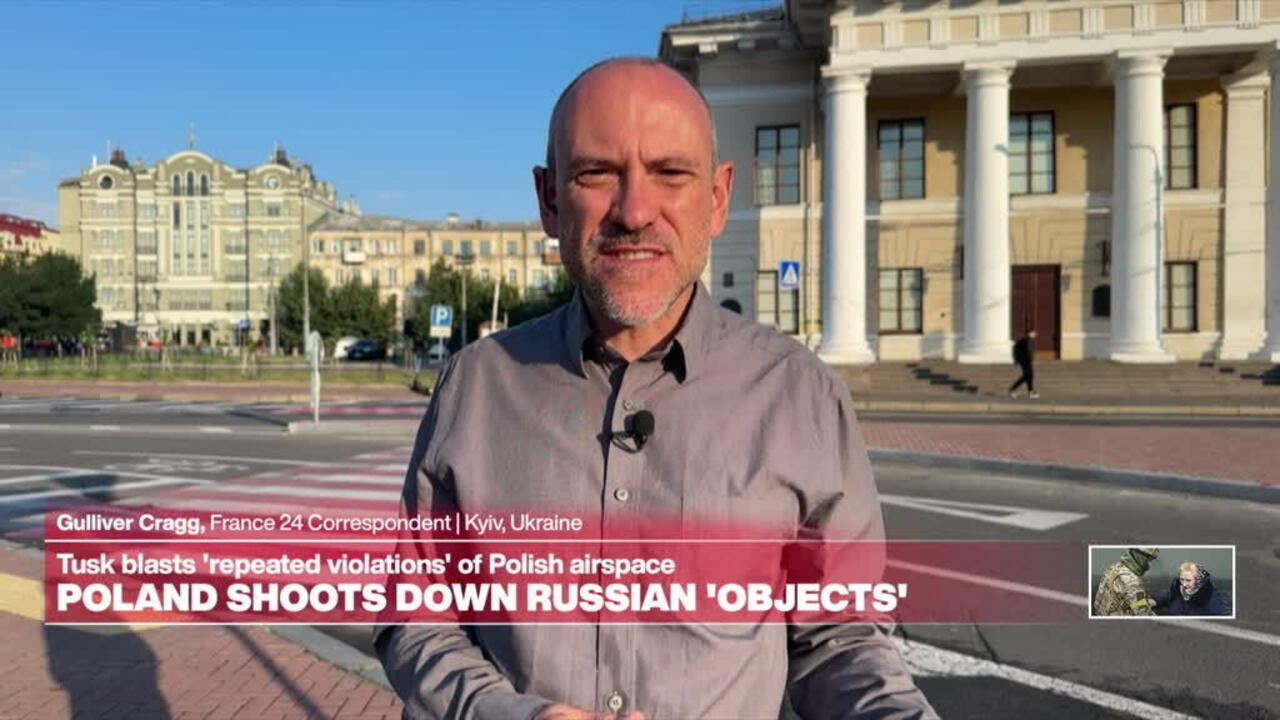European countries still rattled by a Russian drone incursion into Polish airspace this week are bracing themselves for further turbulence as troops from Russia and its ally Belarus begin five days of war games on Friday, rehearsing for a potential clash with NATO forces.
The last time the two countries held joint drills in February 2022, Russian President Vladimir Putin sent tanks rolling into Ukraine just days later, many of them crossing from Belarus. The ominous precedent will be high on the minds of NATO members – chief among them Poland and Lithuania, which border Belarus – as they monitor the so-called “Zapad” drills.
“‘Zapad’ means ‘West’ in Russian, and these drills obviously have Western officials very worried because of what happened the last time Moscow and Minsk held joint war games,” said FRANCE 24’s Brussels correspondent David Keating.

The 2022 drills allowed Russia to deploy troops to Belarus that were later used to invade Ukraine from the north. They came on the heels of much larger military exercises held months earlier, dubbed “Zapad 2021”, that prompted US and British intelligence agencies to warn of a looming Russian invasion of Ukraine.
After three-and-a-half years of war in Ukraine, NATO members will be watching the latest Zapad drills closely for possible clues about Putin’s next moves, amid growing fears in Europe that Moscow may seek to escalate the war in Ukraine by targeting a member of the US-led alliance.
Scaled-back military drills
Analysts have cautioned against comparing Zapad 2025 with the much larger drills that took place in 2021, stressing that Russia cannot afford to divert substantial resources away from its ongoing war of attrition in Ukraine.
“Right now, Moscow cannot send the tens of thousands of troops to Belarus that would be needed to pose a credible threat to countries on NATO’s eastern flank,” said Ryhor Nizhnikau, a senior research fellow and Russia expert at the Finnish Institute of International Affairs.
“The idea that Russia may one day use Zapad drills to strike at countries on NATO’s eastern flank is indeed credible – particularly if it attains its goals in Ukraine and frees up military resources,” he added. “But not this time.”
Officials in Belarus have sought to play down the scale and scope of the military exercises, suggesting in May that they would involve fewer than half the 13,000 troops initially planned – a far cry from the 200,000 mobilised in 2021.

Last month, Defence Minister Viktor Khrenin said the drills would mostly take place far from the country’s western borders, although some “small units will carry out practical tasks to repel a hypothetical enemy” in areas close to Poland and Lithuania.
Belarus, whose authoritarian President Alexander Lukashenko has recently signalled willingness to mend his relationship with the West, also sent formal invitations to all member states of the Organization for Security and Cooperation in Europe and nine countries with NATO military attachés in Minsk to monitor the drills.
Western observers will be most interested in the nuclear-weapons component of the war games, after Moscow and Minsk signed a treaty in December placing Belarus under Russia’s nuclear umbrella. Defence Minister Khrenin said troops would practice “planning the use of” Russian nuclear weapons and nuclear-capable intermediate range missiles that Moscow has promised to supply to Minsk.
“A key part of current Russia-Belarus cooperation is what they call ‘nuclear deterrence’, which in fact involves projecting a nuclear threat to Europe,” said Nizhnikau. “What the West can hope to learn from Zapad is what role the Belarusian might play in this type of Russian operation.”
Countering Zapad
Despite the toned-down rhetoric from Minsk about Zapad 2025, Poland announced on Tuesday it would close its border with Belarus in anticipation of the manoeuvres, which Prime Minister Donald Tusk described as “very aggressive”.
Tusk claimed the Suwalki Gap – a strategic stretch of land in Poland and Lithuania that separates Belarus from Russia’s Baltic Sea exclave of Kaliningrad – was a key “target” of Zapad, highlighting fears in Poland and Lithuania that the drills might be practice for a later attack.
His comments came just hours before Wednesday's early-morning incursion by Russian drones, which has since prompted Warsaw to close air traffic along its borders with Belarus and Ukraine to civilian flights up to an altitude of three kilometres (1.9 miles) until December 9.
Poland and Lithuania are responding to Zapad with their own military exercises, while Germany is also carrying out major war games, dubbed Quadriga 2025, over several weeks in September, with parts expected to coincide with the Russia-Belarus drills.

Nizhnikau said such exercises serve mostly political goals, “aiming to demonstrate to the Polish and Baltic publics that they are being protected, because in these countries there is a clear perception that they may be the target of future drills like Zapad".
From a military point of view, he cautioned, Poland and its allies have more to learn from the very real fighting in Ukraine than from any war games.
“The best clues that NATO can get right now are from the war in Ukraine, which is increasingly becoming a war of drones,” he said. “Poland experienced a small fraction of this war when Russian drones entered its airspace the other night – and we saw that it was totally unprepared.”
Jets vs polystyrene drones
Addressing a Paris naval conference in 2023, French Admiral Pierre Vandier, the man in charge of identifying NATO’s operational requirements as head of the Allied Command Transformation, warned that the alliance would increasingly face a “price-per-shot problem” as it grappled with the emergence of drone warfare.
“If we fire $1 million missiles at $10,000 targets, one day, we will lose,” Vandier said.
The “price-per-shot" problem was on full display this week when the Atlantic Alliance mobilised a multinational force comprising F-35 and F-16 fighter jets, Mi-24, Mi-17 and Black Hawk helicopters, as well as Patriot defence systems, to confront fewer than 20 Russian drones made of polystyrene and costing about $10,000 apiece.

After its forces shot down just three of the drones, NATO sought to play up the achievement.
“Our air defences were activated and successfully ensured the defence of NATO territory, as they are designed to do,” said the alliance’s secretary general, Mark Rutte. “NATO’s swift response to Russian drones violating Polish airspace overnight is firm. Well done to the responders, that's the way we do business,” added Admiral Giuseppe Cavo Dragone, head of NATO’s military committee.
“In reality, military analysts say this wasn’t a good look for NATO,” said FRANCE 24’s Keating in Brussels. “The fact that it had to use fighter jets to shoot down drones has people a bit worried about NATO’s capability to deal with such incursions on its eastern flank,” he added. “There’s a lot of talk right now that NATO desperately needs a ‘drone wall’ on its eastern border.”
Phillips P. O’Brien, a professor of strategic studies at St Andrews University in Scotland, said the drones’ incursion had been “a pinprick compared to what Ukraine experiences nightly”, noting that Russia regularly fires several hundred drones at Kyiv and other Ukrainian targets in a single day.
Writing in his Substack newsletter, O’Brien said the drones should have been identified as possible threats long before they crossed into Poland from Belarus. He added, “NATO states, even frontline ones, have clearly not prepared for war of the type that is happening now.”
Testing NATO’s resolve
Russia has claimed its drones did not target Poland, while Belarus said Wednesday it tracked some that “lost their course” because they were jammed. European leaders, however, say the incursion amounted to an intentional expansion of Russia’s assault against Ukraine.

In addition to poking gaps in NATO’s defences, the drones have also raised questions about the deterrence credibility that is the very purpose of the US-led military alliance. The lack of condemnation from Washington, the main guarantor of that deterrence, will only have heightened concerns in Europe about the strength of the NATO umbrella, while emboldening Moscow, noted Dafydd Townley, a teaching fellow in US politics and international security at the University of Portsmouth in the UK.
“This is Putin testing his boundaries, testing NATO’s resolve, and indicating to NATO member states and the US that he has no intention of sitting down for talks with the Ukrainians,” said Townley. “He’s quite happy to see out the conflict over the winter and into the next year.”
Nizhnikau suggested that Putin's attempts to test the Western alliance, and sow fear among its more exposed members in Eastern Europe, could serve a tactical purpose for Russia’s war effort in Ukraine, diverting resources away from Kyiv to defend NATO’s eastern flank.
“This type of drone attack can have multiple targets, from testing NATO’s preparedness to shaping policy and public opinion in Poland and around Europe,” he said. “If we now decide that Patriot missiles must be rushed to Poland for the defence of Europe, how many will be left for Ukraine, where they are urgently needed?”

